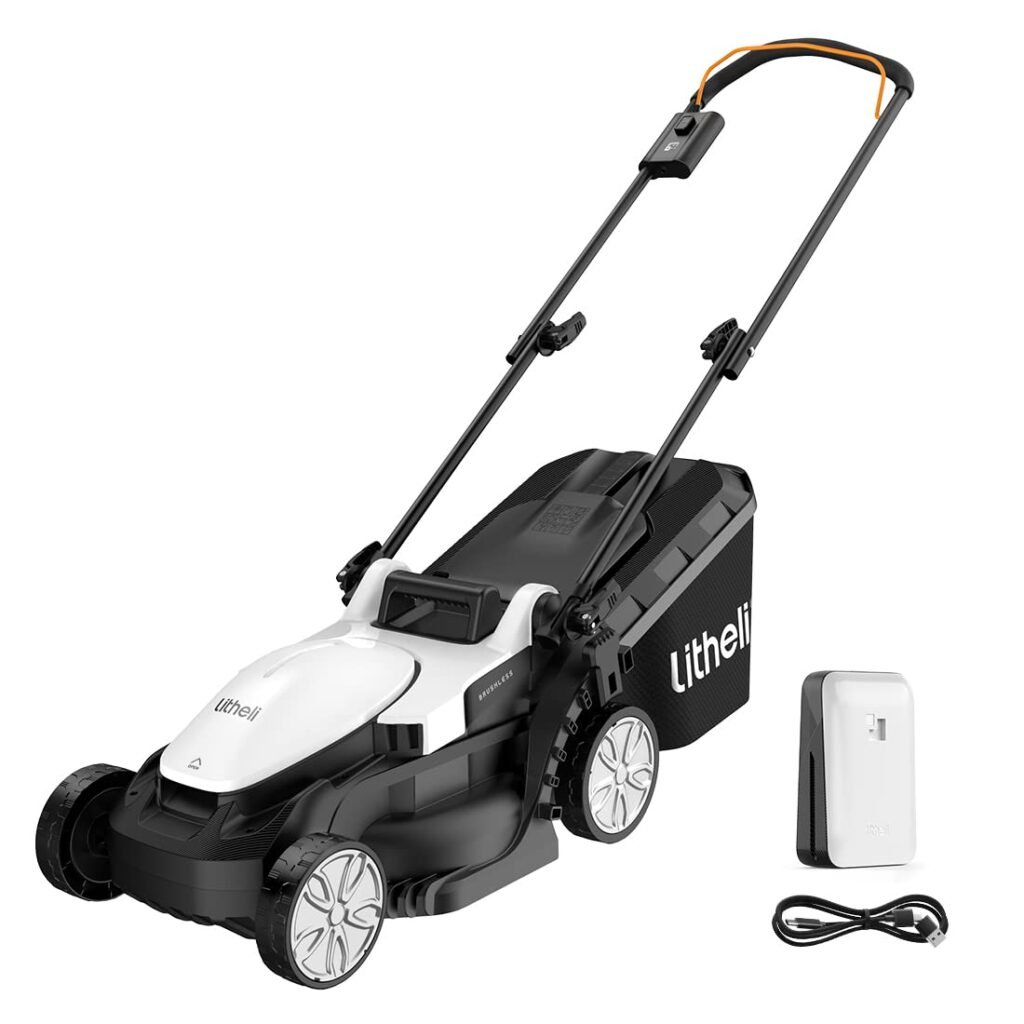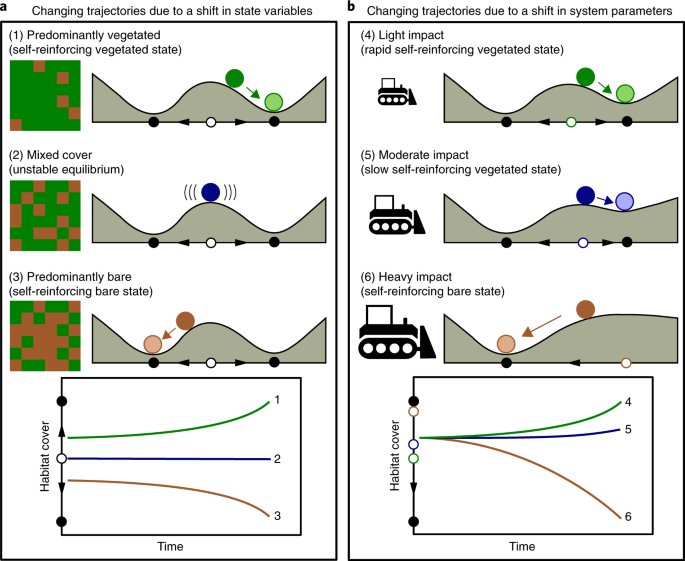Imagine effortlessly gliding across your lush green lawn, feeling the sun on your face and the gentle breeze in your hair, all while operating a sleek and efficient lightweight battery-powered lawn mower. Say goodbye to the hassle of dealing with cords, the fumes of gasoline, and the noise of traditional lawn mowers. With our innovative solution, you can create a beautifully manicured yard without breaking a sweat or harming the environment. Our efficient lightweight battery-operated lawn mower is not only easy to use but also eco-friendly, making it the perfect choice for modern homeowners seeking convenience and sustainability in their outdoor maintenance routine.
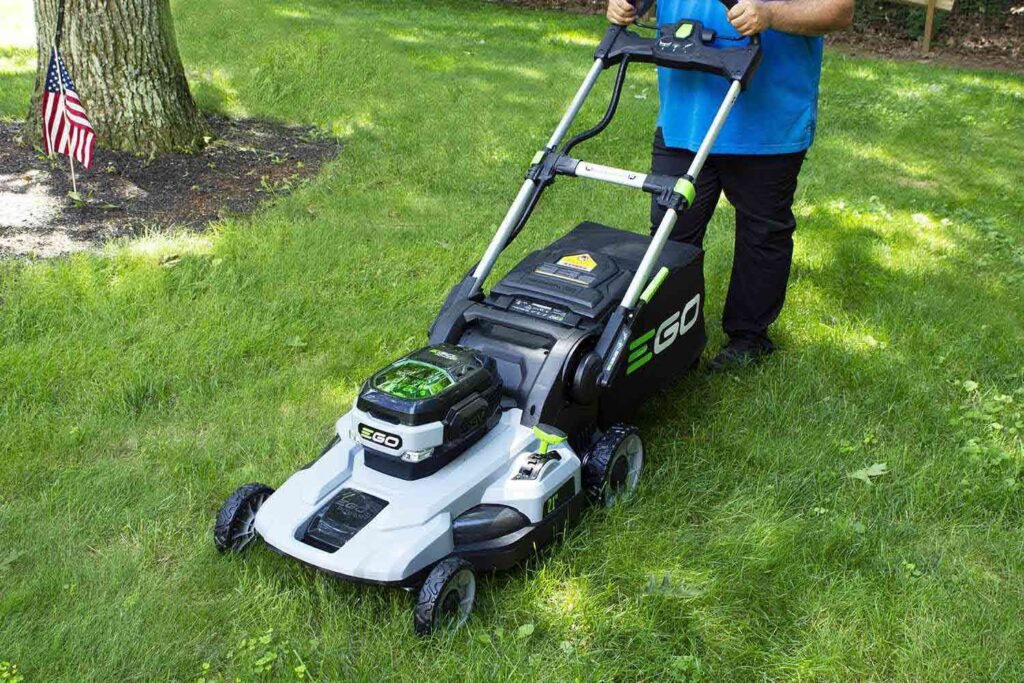
This image is property of www.thespruce.com.
I. Benefits of Lightweight Battery Operated Lawn Mower
A. Portability and Maneuverability
One of the major benefits of a lightweight battery operated lawn mower is its superior portability and maneuverability. Unlike bulky and heavy gasoline-powered mowers, a lightweight electric mower can be easily pushed and controlled, especially in tight spaces or uneven terrains.
Whether you have a small garden or a large yard with various obstacles, a lightweight mower provides the ease and flexibility to navigate effortlessly around flower beds, trees, and fences. You can easily change direction or push the mower up slopes without straining your muscles. The lightweight design ensures that you can easily lift and transport the mower for storage or seasonal use.
B. Reduced Noise and Emissions
Another important advantage of a battery operated lawn mower is the significant reduction in noise and emissions compared to traditional gasoline-powered mowers. Gasoline mowers are notorious for their loud noise levels, which can disturb your neighbors and even cause hearing damage over time. In contrast, electric mowers emit minimal noise and allow you to mow your lawn without disrupting the peace and tranquility of your surroundings.
Furthermore, battery operated mowers produce zero emissions, making them an eco-friendly alternative to gas mowers. By choosing an electric mower, you can contribute to reducing air pollution and the carbon footprint associated with fossil fuel consumption. This not only benefits the environment but also improves air quality in your immediate vicinity.
C. Low Maintenance Requirements
Maintaining a battery operated lawn mower is generally easier and more cost-effective than caring for a gas-powered mower. Electric mowers do not require regular oil changes, spark plug replacements, or air filter cleanings. This not only saves you time and effort but also eliminates the need to dispose of hazardous waste such as used motor oil.
Battery operated mowers also have fewer moving parts, resulting in lower maintenance and repair costs. You won’t have to worry about issues such as engine tune-ups or carburetor repairs. With proper care and maintenance, your electric mower can provide reliable performance for many years without breaking the bank on frequent repairs.
II. Key Features and Components
A. Lightweight Design
The lightweight design of a battery operated lawn mower is achieved through the use of durable yet lightweight materials such as aluminum and high-strength plastics. This allows for easy maneuverability and reduces physical strain during operation. A lighter mower is not only easier to push but also facilitates effortless transportation and storage.
B. Battery Operated
The heart of a battery operated lawn mower is its rechargeable battery. These batteries are typically lithium-ion, known for their high energy density and long-lasting performance. They provide sufficient power to efficiently mow even larger lawns. Battery operated mowers come with a removable battery pack that can be charged separately, allowing for continuous mowing with an additional fully charged battery.
C. Cutting Deck
The cutting deck is the part of the mower that houses the blade and determines the width of the cut. Lightweight battery operated mowers usually feature cutting decks made of tough and durable materials such as steel or composite materials. These decks provide excellent cutting performance and are resistant to corrosion and damage from grass clippings.
D. Blades and Cutting Height Adjustment
The blades of a battery operated mower are usually made of hardened steel, which ensures sharpness and durability. Some models feature mulching blades that finely chop grass clippings, returning them to the lawn as natural fertilizer. Additionally, most battery operated mowers offer adjustable cutting heights, allowing you to customize the length of your grass according to your preferences.
E. Grass Collection System
Battery operated mowers often include a grass collection system, commonly a rear bag or a rear discharge chute. These systems efficiently collect grass clippings, keeping your lawn looking neat and tidy. For those who prefer mulching, some mowers come with a mulching plug that allows the clippings to be finely chopped and redistributed onto the lawn as nutrients.
F. Handle and Controls
The handle of a battery operated mower is typically ergonomically designed, providing a comfortable grip and minimizing fatigue during use. It may also feature adjustable height settings to accommodate users of different heights. The controls, usually located on the handle, allow for easy operation and may include features such as a safety key or a start button.
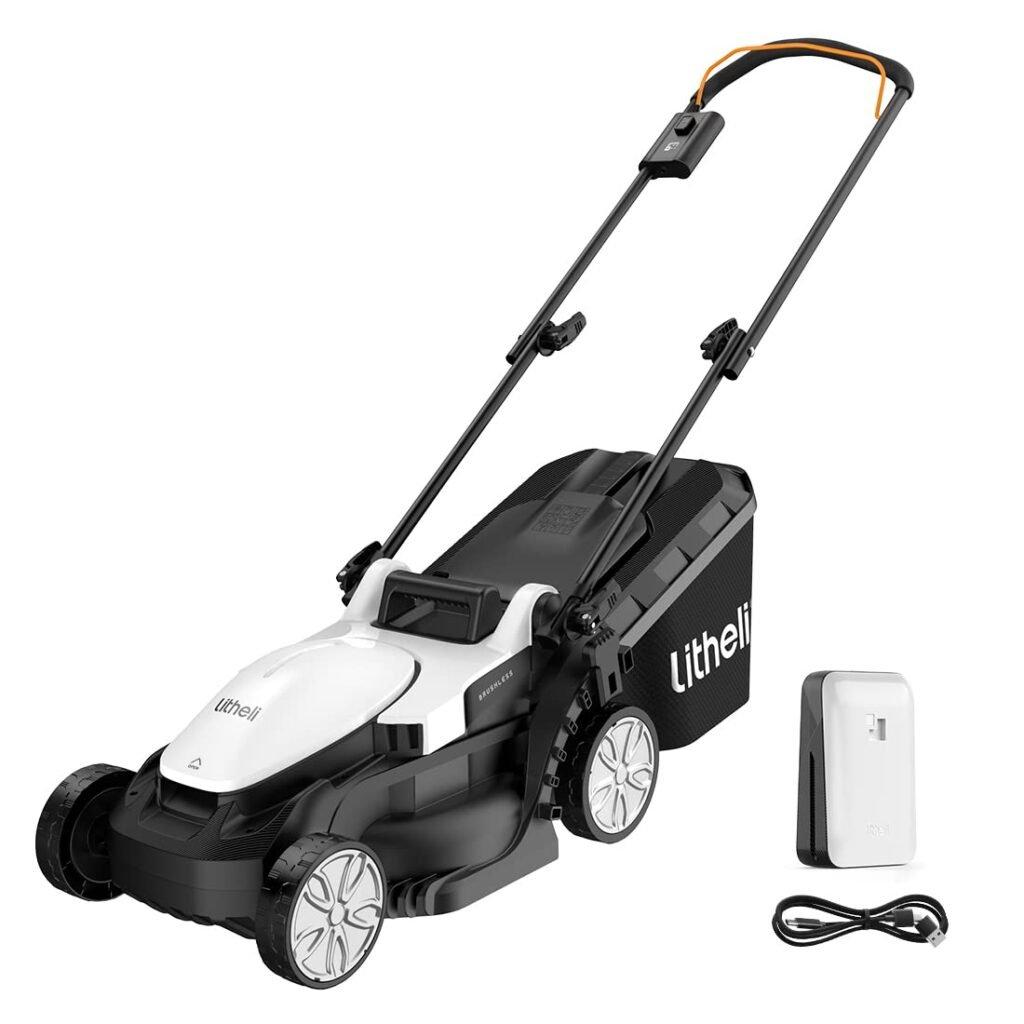
This image is property of Amazon.com.
III. Choosing the Right Battery
A. Battery Types
When choosing a battery for your lawn mower, you’ll come across different types, including lithium-ion (Li-ion), lead-acid, and nickel-cadmium (NiCd) batteries. Lithium-ion batteries are the most popular choice due to their high energy density, lightweight nature, and longer lifespan. They also have no memory effect, allowing them to be recharged at any time without affecting performance.
Lead-acid batteries are less common in battery operated mowers due to their heavy weight and shorter lifespan compared to lithium-ion batteries. However, they are generally more affordable. Nickel-cadmium batteries, on the other hand, have become less popular due to their toxicity and lower capacity.
B. Voltage and Ah Rating
Battery voltage and ampere-hour (Ah) rating are important factors to consider when choosing a battery for your mower. Voltage determines the power output, with higher voltage batteries providing more cutting power. Common voltage options for battery operated mowers range from 36V to 80V.
The Ah rating indicates the battery’s capacity and determines how long it will last before requiring recharging. Higher Ah ratings generally result in longer runtimes. However, it is important to balance the Ah rating with the weight of the battery, as a higher capacity battery may increase the overall weight of the mower.
C. Runtime and Charging Time
Runtime and charging time are crucial considerations when selecting a battery for your lawn mower. Runtime refers to how long the battery can power the mower before it needs to be recharged. It is influenced by factors such as battery capacity, cutting conditions, and the size of your lawn.
Charging time, on the other hand, is the duration required to fully recharge the battery. Quick charging batteries are desirable as they allow for more efficient use of the mower. Some batteries can be charged within an hour, while others may require several hours.
IV. Benefits of Efficient Battery Usage
A. Longer Runtime
Efficient battery usage translates into longer runtimes, enabling you to mow larger areas without interruption. There are several ways to maximize the battery life of your lawn mower. Avoid pushing the mower at maximum speed continuously, as this will drain the battery quickly. Instead, maintain a consistent and moderate pace to optimize runtime.
Additionally, adjusting the cutting height to the optimal level for your lawn can help extend battery life. Cutting grass too short requires more power and drains the battery faster. Finding the right balance between a well-maintained lawn and battery efficiency will result in extended mowing sessions.
B. Improved Cutting Performance
Efficient battery usage can also enhance the cutting performance of your mower. By ensuring the battery is fully charged before each use and keeping it in good condition, you can maintain consistent power output throughout the mowing session. This leads to a more precise and even cut, leaving your lawn looking well-groomed and attractive.
C. Reduced Charging Time
By implementing efficient battery usage practices, you can minimize the frequency and duration of charging cycles. This is advantageous, especially when you need to complete the mowing task quickly or have limited time for recharging. A well-maintained battery and an optimized mowing routine can significantly reduce charging time, allowing you to make the most of your battery operated lawn mower.
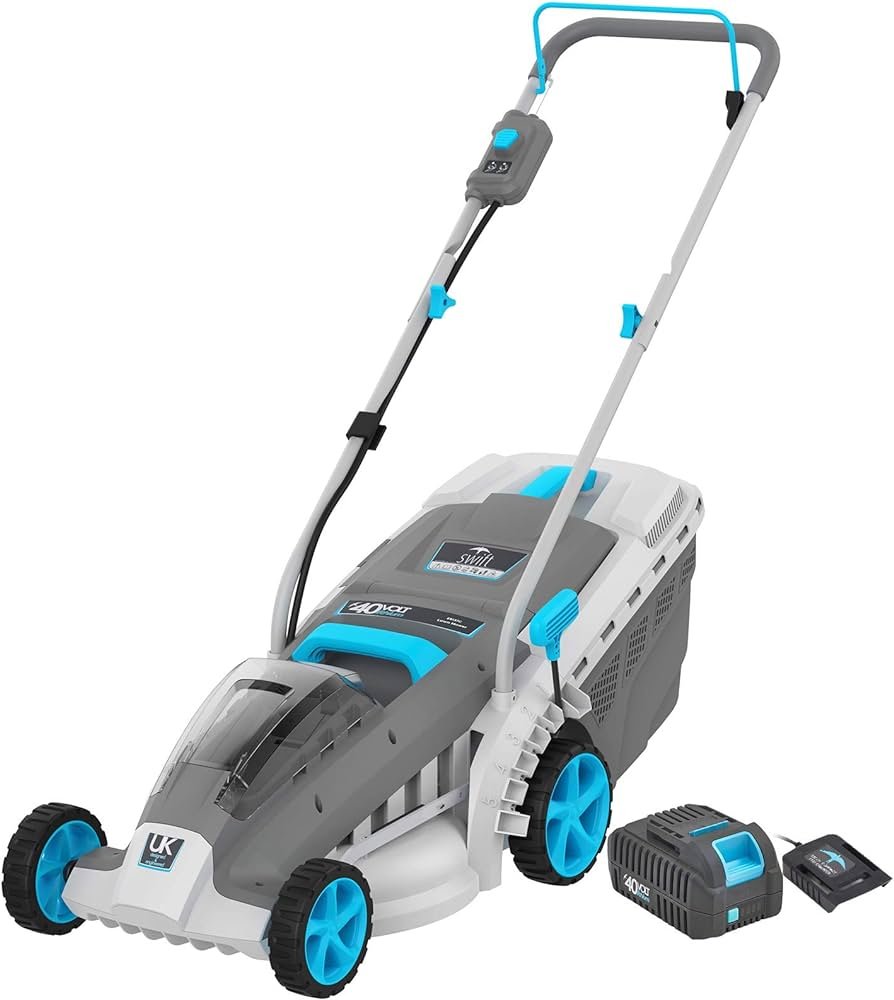
This image is property of Amazon.com.
V. Maintenance and Care
A. Regular Cleaning and Inspection
Proper maintenance and care are essential for the longevity and optimal performance of your battery operated lawn mower. After each use, make it a habit to clean the cutting deck, removing any grass clippings or debris that may have accumulated. This prevents corrosion and blockage that could affect the mower’s functionality.
Regularly inspect the blades for signs of wear, damage, or dullness. Dull blades can result in an uneven cut and put unnecessary strain on the mower. If necessary, sharpen or replace the blades to ensure efficient cutting performance.
B. Blade Sharpening and Replacement
Blade sharpening is a key maintenance task that should be performed periodically to maintain the cutting performance of your mower. Dull blades not only produce an unsightly cut but also require more power from the battery. Consult the manufacturer’s guidelines for specific instructions on sharpening the blades or consider taking them to a professional sharpening service.
In some cases, blades may sustain irreparable damage or wear down significantly over time. If this occurs and the blades are beyond sharpening, replacement blades can be easily obtained. Ensure you choose compatible blades that are recommended by the mower’s manufacturer to maintain optimal cutting efficiency.
C. Battery Care and Storage
Taking care of the battery is crucial for maximizing its performance and lifespan. Adhere to the manufacturer’s guidelines regarding charging and storage to prevent damage. Keep the battery away from extreme temperatures and moisture, as these can degrade its performance and shorten its lifespan.
If you plan on storing the mower and battery for an extended period, it is recommended to fully charge the battery before doing so. This helps preserve the battery’s capacity and prevents it from discharging completely, which can lead to irreversible damage.
VI. Tips for Efficient Operation
A. Proper Cutting Technique
When operating a battery operated lawn mower, it is important to employ proper cutting techniques to ensure efficient and effective mowing. Start by mowing in straight lines, overlapping each pass slightly to avoid missed patches. Maintain a steady pace to optimize battery usage, taking care not to rush or go too slowly.
If you encounter tall or dense grass, raise the cutting height to avoid excessive strain on the mower and battery. Gradually lower the cutting height for subsequent passes until the desired grass length is achieved. This technique prevents unnecessary battery drain and ensures a cleaner, even cut.
B. Choosing the Right Operating Mode
Many battery operated lawn mowers offer different operating modes, such as mulching, bagging, or side discharge. Choosing the right mode for your lawn and conditions can improve battery efficiency. Mulching, for instance, allows the clippings to be finely chopped and distributed back onto the lawn, reducing the need for frequent emptying of the grass collection system and extending battery runtime.
Alternatively, bagging the clippings is a suitable option if you prefer a neat and debris-free lawn. When side discharge is used, the clippings are expelled to the side, allowing for faster mowing and reduced power consumption. Experiment with different modes to find the one that suits your needs while optimizing battery usage.
C. Lawn Mower Maintenance Schedule
Establishing a maintenance schedule for your battery operated lawn mower ensures that it remains in top condition and prolongs its lifespan. Regularly refer to the manufacturer’s guidelines for recommended maintenance tasks and intervals. Some routine maintenance includes cleaning, blade inspection, and oiling or lubrication of moving parts.
By adhering to a maintenance schedule, you can catch any potential issues early on and fix them before they escalate. This proactive approach will help prevent costly repairs and ensure that your mower operates at its best performance for years to come.
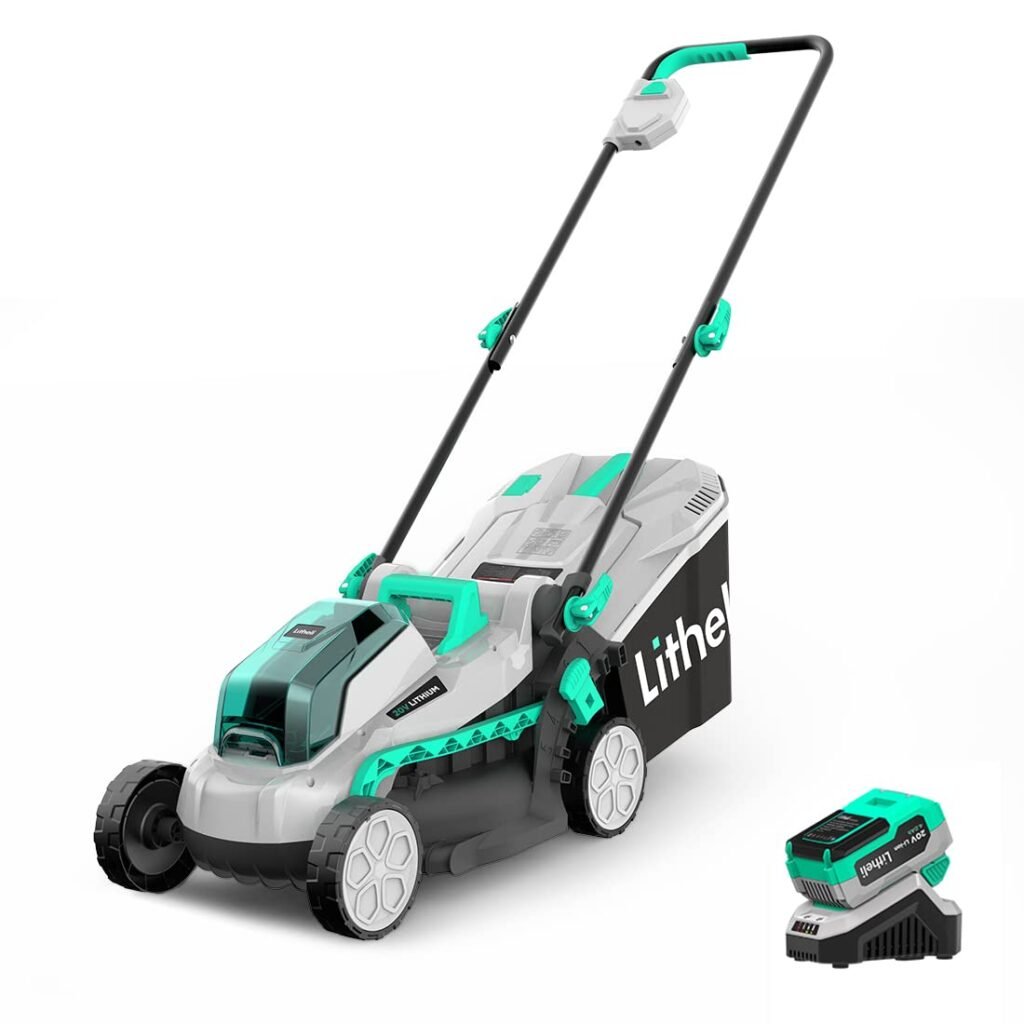
This image is property of Amazon.com.
VII. Safety Considerations
A. Blade Safety Features
Battery operated lawn mowers are equipped with various safety features to protect users from potential accidents. One of the primary safety features is a blade brake system that stops the blade rotation immediately when the mower is released or the handle is released. This prevents accidental injuries and provides added peace of mind during operation.
Some mowers also have a safety key or a keyless start feature that requires a specific action to start the mower, preventing unintended activation. Familiarize yourself with these safety features and ensure they are functioning properly before each use.
B. Personal Protective Equipment
When operating any lawn mower, including a battery operated one, wearing the appropriate personal protective equipment (PPE) is essential for ensuring your safety. At a minimum, wear sturdy closed-toe shoes to protect your feet and minimize the risk of injury from debris or the mower itself. Additionally, wearing eye protection, such as safety glasses or goggles, shields your eyes from flying grass clippings and other projectiles.
If operating the mower in a noisy environment, consider using ear protection, such as earmuffs or earplugs, to safeguard your hearing. Prolonged exposure to loud noise levels can result in permanent hearing damage.
C. Operational Safety Precautions
In addition to wearing PPE, adhering to operational safety precautions is vital when using a battery operated lawn mower. Avoid mowing wet or slippery grass, as it can increase the risk of slips and falls. Wet grass can also clog the cutting deck and affect performance.
Before starting the mower, ensure the cutting area is clear of any obstacles such as rocks, sticks, and toys. Objects hidden in the grass can become projectiles when struck by the blades, posing a danger to you and others in the vicinity.
Always be aware of your surroundings and avoid mowing near people, pets, or fragile objects. Maintain a safe distance from the mower, especially when it is in operation. If you need to make any adjustments or maintenance tasks, turn off the mower and remove the battery to prevent any accidental starts.
VIII. Comparison with Gasoline-Powered Lawn Mowers
A. Environmental Impact
When comparing lightweight battery operated lawn mowers with their gasoline-powered counterparts, the environmental impact is one of the most significant factors. Gasoline mowers emit greenhouse gases, contributing to air pollution and climate change. In contrast, battery operated mowers produce zero emissions during operation, making them a more eco-friendly choice.
By choosing a battery operated mower, you can help reduce your carbon footprint, improve local air quality, and contribute to a more sustainable environment. Additionally, the elimination of gasoline usage reduces the risk of accidental spills and fuel contamination, further benefiting the environment.
B. Noise Pollution
Gasoline-powered mowers are known for their loud noise levels, which can be a nuisance for both the user and their neighbors. These mowers can reach noise levels of up to 100 decibels, which is equivalent to the sound of a chainsaw. Prolonged exposure to such high levels of noise can cause hearing damage.
In contrast, battery operated mowers are significantly quieter, with noise levels typically ranging from 60 to 75 decibels. This allows you to mow your lawn without disturbing the peace and tranquility of your surroundings. It also prevents potential conflicts with neighbors and complies with noise regulations in residential areas.
C. Cost and Maintenance
When considering cost and maintenance, battery operated mowers have several advantages over gasoline-powered mowers. Although the initial purchase cost of an electric mower may be slightly higher, the long-term savings can outweigh this difference. Electric mowers do not require gasoline or oil, reducing ongoing fuel costs. Additionally, they have fewer moving parts, resulting in lower maintenance and repair costs over time.
Gasoline mowers, on the other hand, require regular oil changes, spark plug replacements, air filter cleanings, and carburetor adjustments. These maintenance tasks not only take time but also incur additional expenses. Moreover, gasoline mowers are more prone to engine issues, requiring professional repairs that can be costly.
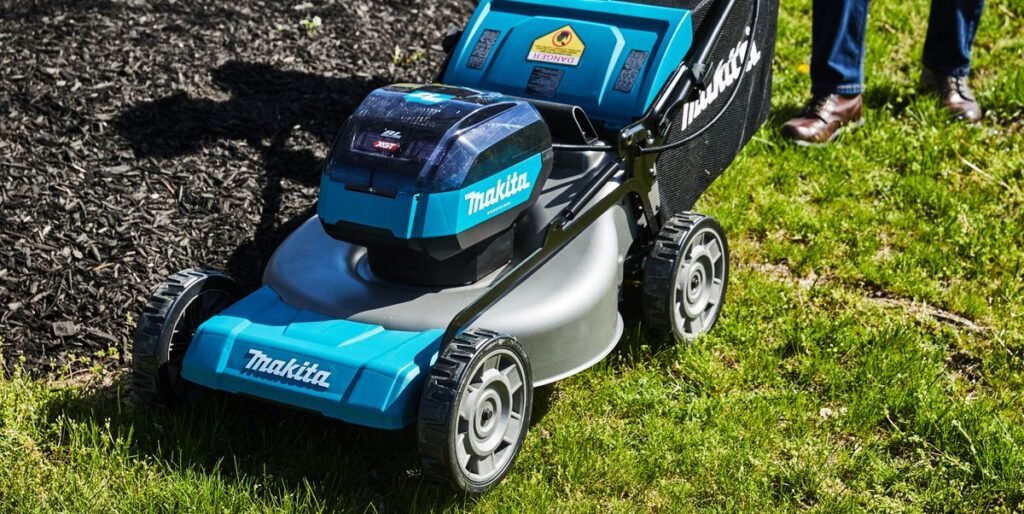
This image is property of hips.hearstapps.com.
IX. Product Recommendations
A. Top Lightweight Battery Operated Lawn Mowers
-
Greenworks 40V Cordless Lawn Mower: This mower offers a lightweight design, easy maneuverability, and a long battery life. It features a 17-inch cutting deck, adjustable cutting height, and a grass collection system. The powerful battery allows for continuous mowing with minimal downtime.
-
EGO Power+ 56V Lithium-ion Cordless Lawn Mower: Known for its exceptional cutting performance, this mower combines power and efficiency. Its lightweight construction, large cutting deck, and long battery life make it suitable for both small and large lawns. The maneuverability and low noise levels add to its appeal.
-
WORX WG779 40V Cordless Lawn Mower: This mower offers a compact and lightweight design, making it easy to push and store. With a 14-inch cutting deck and multiple cutting height options, it is ideal for smaller lawns. The detachable battery allows for quick charging and uninterrupted mowing.
B. Budget-Friendly Options
-
Sun Joe MJ401E-PRO Electric Lawn Mower: This affordable electric mower is lightweight and maneuverable, making it suitable for small to medium-sized lawns. It features a 13-amp motor, a 14-inch cutting deck, and a three-position height adjustment. The compact size and foldable handle make storage a breeze.
-
BLACK+DECKER MTC220 3-in-1 Trimmer/Edger and Mower: This versatile tool combines a trimmer, edger, and mower in one, offering great value for money. It is lightweight, easy to maneuver, and perfect for maintaining smaller lawns. The adjustable cutting height and ergonomic design enhance its usability.
With these product recommendations, you can find lightweight battery operated lawn mowers that suit both your budget and specific needs.
X. Conclusion
Investing in a lightweight battery operated lawn mower provides numerous benefits, including enhanced portability and maneuverability, reduced noise and emissions, and low maintenance requirements. The key features and components of these mowers, such as their lightweight design, battery operation, cutting deck, and grass collection system, ensure efficient and effective lawn maintenance.
Choosing the right battery, maximizing battery efficiency, and following proper maintenance and care practices are essential for optimal performance and longevity. By implementing efficient operating techniques, adhering to safety considerations, and comparing battery operated mowers with gasoline-powered options, you can make an informed decision. Explore the recommended products to find the best lightweight battery operated lawn mower within your budget.
With a lightweight battery operated lawn mower, you can enjoy the convenience and eco-friendliness of electric mowing while achieving a well-maintained and attractive lawn. Say goodbye to the hassles of gas mowers and embrace the efficiency and ease of battery power.

